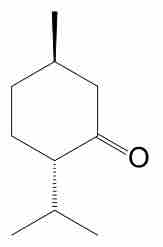Capital Structure Overview
Capital structure refers to the way a corporation finances its assets through some combination of equity, debt, or hybrid securities. A firm's capital structure is the composition or 'structure' of its liabilities. For example, a firm that sells 20 billion dollars in equity and 80 billion dollars in debt is said to be 20% equity-financed and 80% debt-financed. The firm's ratio of debt to total financing, 80% in this example, is referred to as the firm's leverage. In reality, capital structure may be highly complex and include dozens of sources. Gearing Ratio is the proportion of the capital employed by the firm which comes from outside of the business, such as by taking a short term loan.

Capital Structure.
Capital Structure shows how a company's assets are built out of debt and equity.
Modigliani and Miller created a theory of Capital Structure in a perfect market. There are several qualifications for a "perfect market":
- no transaction or bankruptcy cost
- perfect information
- firms and individuals can borrow at the same interest rate
- no taxes
- investment decisions are not affected by financing decisions
Modigliani and Miller made two findings under these conditions:
- The value of a company is independent of its capital structure
- The cost of equity for a leveraged firm is equal to the cost of equity for an unleveraged firm, plus an added premium for financial risk
This means, as leverage increases, while the burden of individual risks is shifted between different investor classes, total risk is conserved and hence no extra value created.
Their analysis was extended to include the effect of taxes and risky debt. Under a classical tax system, the tax deductibility of interest makes debt financing valuable; the cost of capital decreases as the proportion of debt in the capital structure increases. The optimal structure, then would be to have virtually no equity at all.
If capital structure is irrelevant in a perfect market, then imperfections which exist in the real world must be the cause of its relevance. The theories below try to address some of these imperfections, by relaxing assumptions made in the M&M model.
Capital Structure Theory
Trade-off theory allows bankruptcy cost to exist. It states that there is an advantage to financing with debt (the tax benefits of debt) and that there is a cost of financing with debt (the bankruptcy costs and the financial distress costs of debt). The marginal benefit of further increases in debt declines as debt increases, while the marginal cost increases, so that a firm that is optimizing its overall value will focus on this trade-off when choosing how much debt and equity to use for financing. Empirically, this theory may explain differences in Debt/Equity ratios between industries, but it doesn't explain differences within the same industry.
Pecking Order Theory tries to capture the costs of asymmetric information. It states that companies prioritize their sources of financing (from internal financing to issuing shares of equity) according to least resistance, preferring to raise equity for financing as a last resort. Internal financing is used first. When that is depleted, debt is issued. When it is no longer sensible to issue any more debt, equity is issued.
This theory maintains that businesses adhere to a hierarchy of financing sources and prefer internal financing when available, while debt is preferred over equity if external financing is required. Thus, the form of debt a firm chooses can act as a signal of its need for external finance.
The Pecking Order Theory is popularized by Myers (1984), when he argues that equity is a less preferred means to raise capital because when managers (who are assumed to know better about true condition of the firm than investors) issue new equity, investors believe that managers think that the firm is overvalued and managers are taking advantage of this over-valuation. As a result, investors will place a lower value to the new equity issuance.